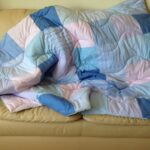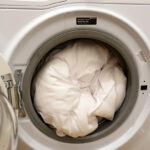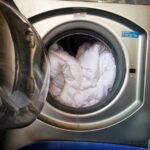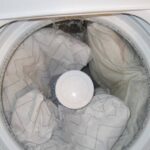How to wash a padding polyester blanket
Sintepon is an inexpensive filler material that is characterized by good temperature retention, lightness, pleasant tactile contact and hypoallergenicity. In order for a blanket made from it to serve for a long time, it needs competent care, the basis of which is proper washing.

When to wash your blanket
It is recommended to wash the blanket every three to four months, and this can be done both in an automatic machine and by hand. This frequency is due to the fact that the synthetic winterizer, although it is a synthetic fiber, accumulates dust over time, which can cause allergies. Do not wash a new product. Simply using a clean duvet cover is enough.
How to prepare a blanket
Preparation for washing includes the following nuances:
- Study of the label on the product. It may contain permissions and washing recommendations. If they are absent, then you can proceed according to the standard scheme.
Note! If the label indicates a prohibition on automatic washing, instead of which dry cleaning is recommended, then not a synthetic winterizer is used as a filler, but its substitute.
- Choice of detergent. Gel powders containing enzymes should be preferred. They allow for high-quality cleaning without settling between non-woven fibers.
- Preparing the blanket. If the weight allows, then it should first be wetted. This can be done after placing it in the drum. If left dry, the filler fibers can fill with bubbles, making it difficult to clean properly.
- Checking the integrity of the cover. If it is broken, then the material can fluff up, which will lead not only to wear of individual fragments, but also to clogging of filters.
- Choice of temperature conditions. The water temperature should be no more than 40 ° C. This is optimal for triggering the enzymes to work, while the structure of the filler will be protected from damage and deformation. In addition, washing at low temperatures will help prevent quick wear of covers, which are most often made from soft and delicate fabrics.
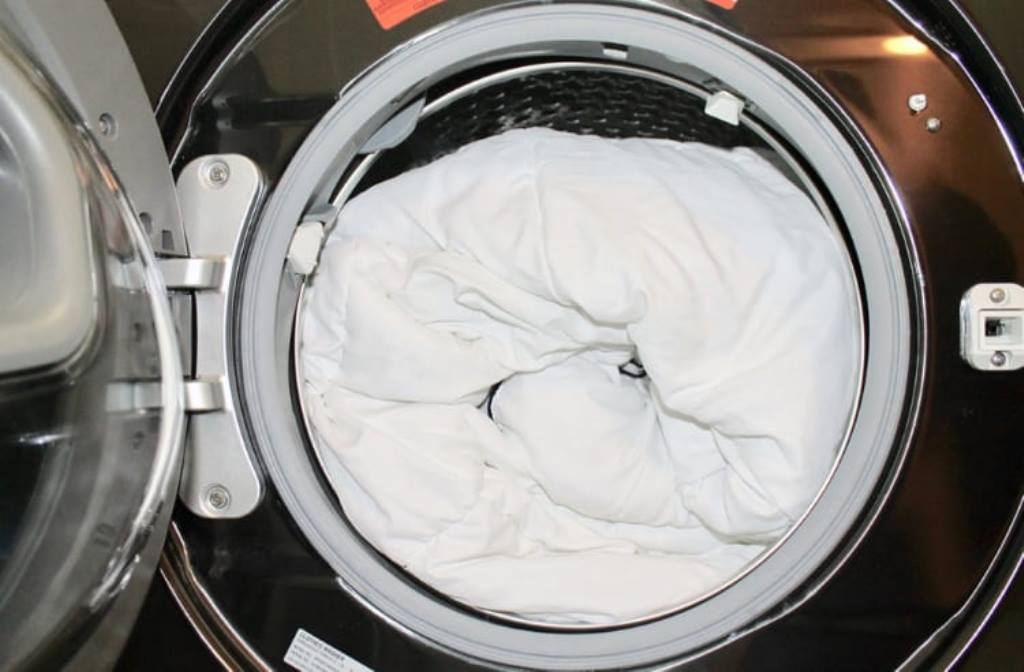
Important! At high temperatures, enzyme agents almost completely lose their properties, which is why it is necessary to replace them with powders that are almost not completely washed out from the filler. This leads to a strong odor and skin irritation, and in some cases an allergic reaction.

How to wash a padding polyester blanket in a washing machine
From padding polyester
When determining whether it is possible to wash a synthetic winterizer product in an automatic machine, it is necessary to clarify its maximum load. If it is 8-10 kg, then washing should go without difficulties, and if 3-5, then such manipulation should be abandoned.
Note! The blanket should be rolled up as compactly as possible, so that there is free space in the machine. If it is not there, then the capacity of the machine is not enough, and it is better to wash it by hand.
Automatic cleaning of the blanket is carried out as follows:
- Prepare the car. Remove the powder cuvette, clean and rinse the suction from residual cleaning agents.
- Pour a gel-like product or a professional shampoo for synthetic winterizer products into the receiver. You must follow the dosage indicated on the package.
- After making sure that the product is intact, roll it up and place it in the drum.
- Place three to four tennis balls in the drum. This will preserve the original appearance of the product, since it will not allow the synthetic winterizer to crumple.
- Close the hatch and set the mode. This can be the “Bulky items”, “Duvet”, “Hand” or “Delicate” program. The main requirements for the mode are the temperature, which should not exceed 40 ° C, and slow turns.
- Disable spin and dry modes to prevent material damage.
- If available, set the double rinse option. If this function is not available, then the blanket should be additionally rinsed after the end of the program.
- Leave the garment in the drum for about an hour after finishing the wash. This will allow the water to drain off, making it easier to dry further.

Note! When leaving the blanket in the drum, open the hatch door to prevent unpleasant odors.
Sheep wool
Only quilts should be machine cleaned. In them, the woolen fabric is placed in a cloth cover, after which it is stitched over the entire surface with a special stitch. This method prevents the wool from piling up into clumps, so both hand and automatic washing is possible for quilted items.
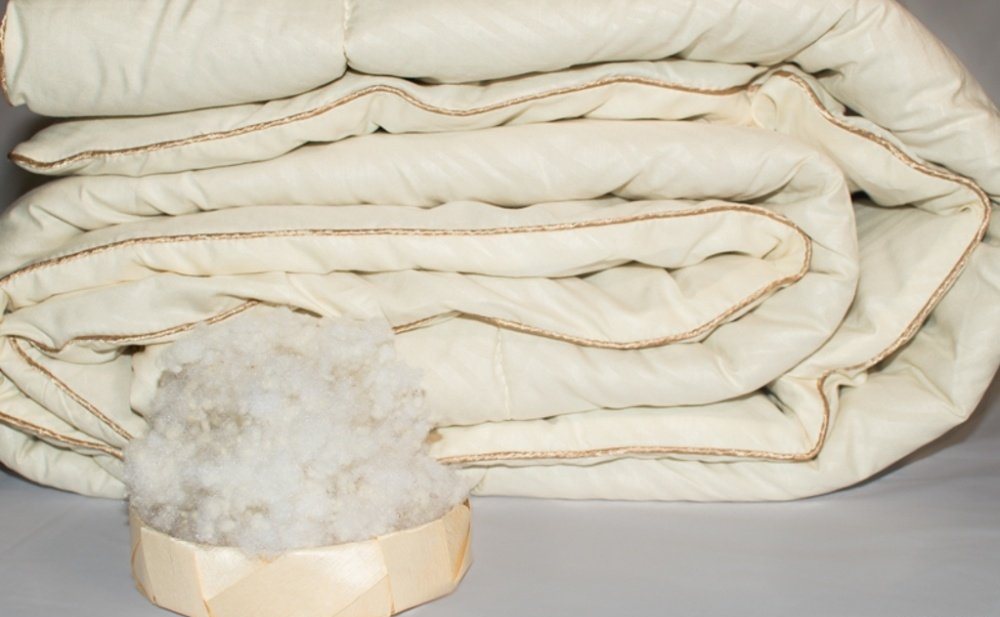
Note! Solid woven blankets should only be hand washed as a last resort. Dry cleaning is recommended for them and fur products and automatic cleaning is prohibited.
Read the manufacturer's label before washing the lambswool blanket. On it you can find information not only about the possibility and conditions of washing, but also about the admissibility of spinning, drying and bleaching.

The cleaning process is as follows:
- Set the "Wool" mode. If it is missing, "Hand Wash" will do.
- Choose a water temperature that should not be warmer than 30 ° C or cold.
- Disable the drying and spinning function.
- Pour a specialized gel intended for washing woolen clothes into a cuvette. It is not recommended to use powders.
- After the end of the program, leave the blanket in the drum for a few minutes to drain off the water. Then spread it out on a horizontal surface and leave to dry, turning it over regularly.
Important! The product should be dried in the shade and outdoors, avoiding direct sunlight.

From other materials
A popular filling for blankets is down, which is light and warm. Since it is susceptible to microorganisms and mold, it needs regular cleaning, which, in the absence of prohibitions on the label, can be carried out in a washing machine. However, it is important to correctly assess the dimensions of the product and the capacity of the device.

Automatic washing is carried out as follows:
- Pre-check the integrity of the product. If it is damaged, then it must be carefully sewn up, since otherwise the fluff can clog the machine during washing.
- Fold the blanket, at first several times, so that its width is equal to the depth of the drum.Next, it must be rolled up and in this form placed in a typewriter. This will distribute the product evenly and prevent toppling. This method is applicable for folding any bulky products.
- Pour detergent into the receptacle. It is better to use a specialized gel designed for washing duvets and down jackets.
- Set the mode. Select "Delicate" or "Hand wash". It is important that the temperature does not exceed 30-40 ° C, in accordance with the recommendations on the label.
- Disable automatic spinning and drying modes.
- After washing, it is necessary to carry out high-quality drying. It is best to do this on a mesh horizontal surface to ensure adequate air circulation. The product can be dried with a hairdryer provided that low temperatures are used.

The features of washing products from another popular material, holofiber, include the following:
- machine cleaning is possible without special restrictions, it is enough to set the temperature to no more than 60 ° C and turn off the spin;
- it is permissible to use not only specialized products, but also simple washing powders, while the addition of conditioners and bleaches is not recommended;
- such blankets should be dried flat on a horizontal surface, whipping occasionally.

Note! You can remove stains from the fabric cover by pre-washing.
Features of hand wash
Machine wash for padding duvet is the best option. However, if the machine has a small load or the product is too large, then hand wash is necessary.
The order of work is as follows:
- Sew up all possible gaps that were found on the cover.
- Fill the bathtub with water at a temperature of 30-40 ° C for about a quarter. The amount of water depends on the size of the product.
- Dissolve the liquid, gel-like blanket detergent in water.
- Place the blanket in the bathtub so that it gets evenly wet and drowned.
- Distribute the product along the bottom of the bath as evenly as possible.
- Get into the bath with bare feet and carefully tread on the blanket. This should be done for about half an hour.
- After removing the plug, drain the soapy water and fill in a new one.
- Rinse and then drain the water again. There are two or three such rinses, depending on the purity of the water.
- Drain the tub and leave the drain open. The blanket should be left for about an hour to allow some of the water to drain off.
- Remove the wet product and take it to dry.
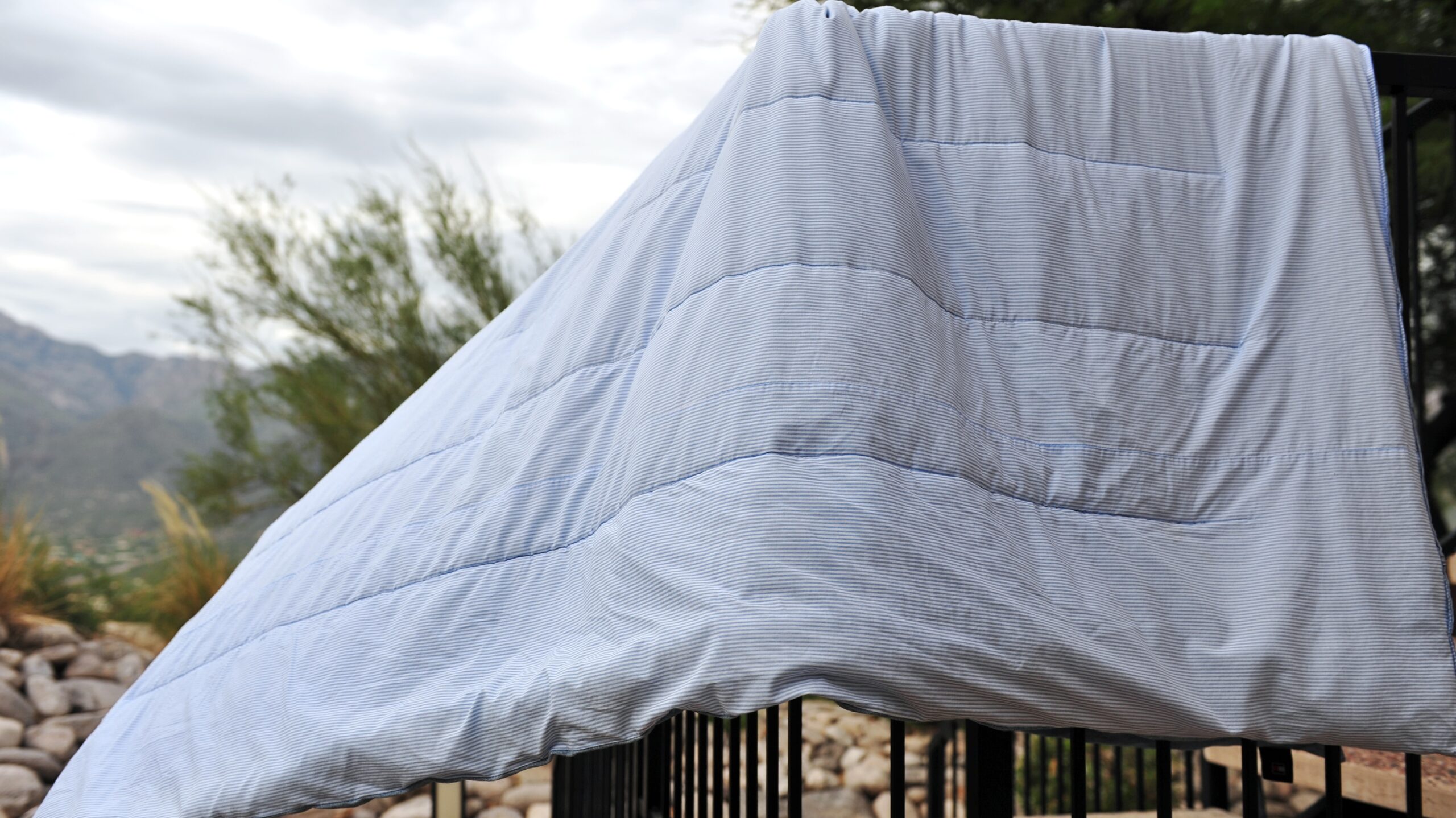
Note! A wet blanket will significantly add weight, which must be taken into account in advance and, if necessary, agreed on assistance with transportation.
Drying features
Products with padding polyester filler are much easier to dry than down or holofiber. The main advantage of padding polyester is the lack of a tendency to fall into lumps. One, when drying, you should adhere to some recommendations:
- Spread the blanket out on a flat, horizontal surface. You can use a tumble dryer or ironing board. Drying in the fresh air is considered the best option, which will take about five hours.
- Do not use heaters or radiators for drying. However, it is permissible to use a fan heater installed at a distance of several meters and directed at the product.
- Shake the blanket every hour. Turn it over several times so that the filler dries better and is evenly distributed.

Before washing a padding polyester blanket in a washing machine, make sure that the drum has sufficient capacity.If this condition is met, then washing the product will be simple, quick and effective, and the material will retain its properties.
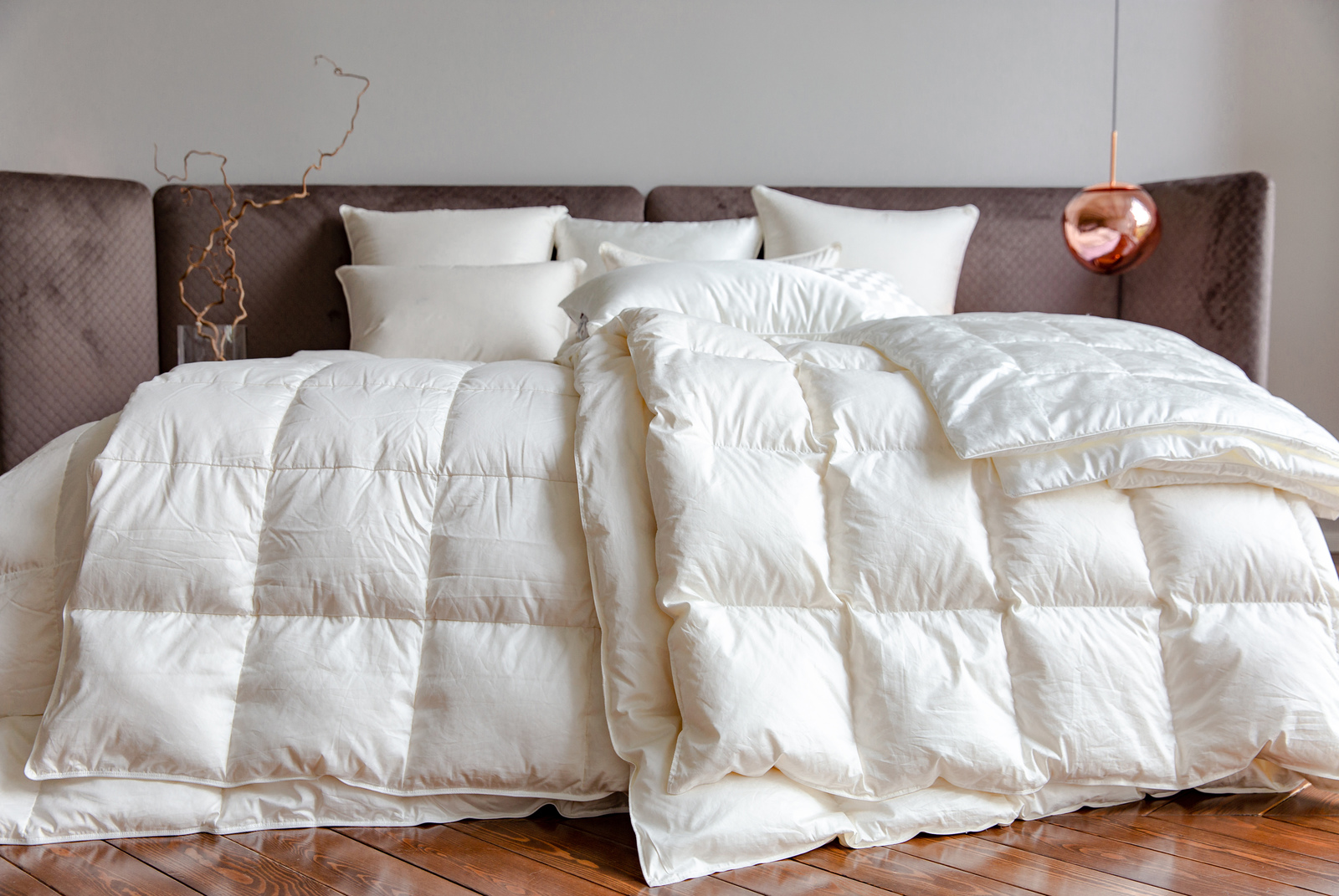
Video: how to properly wash a padding polyester blanket

